From the archives: Jordan by paramotor
In spring 2018, GIN paramotor team pilot Dan Burton discovered some of the possibilies of Jordan as an adventure and cultural destination. With the possibility of a return on the horizon, now seems a good time to look back on the original story.
“Last autumn I was invited to visit Jordan on a press trip to dive some of the deep wreck sites off Aqaba in the crystal clear waters of the Red Sea.
I spent 3 days diving wrecks, then was taken into Wadu Rum desert, just a short 2 hour drive from the sea. I was given the chance to fly a balloon over the sandstone mountains and after this breath-taking flight, I could see the potential of visiting this amazing site for paramotor flying. I spent the next 7 days visiting other sites including Petra and the Dead Sea and started to put together in my mind what could be done if I could get permission to fly these special sites.
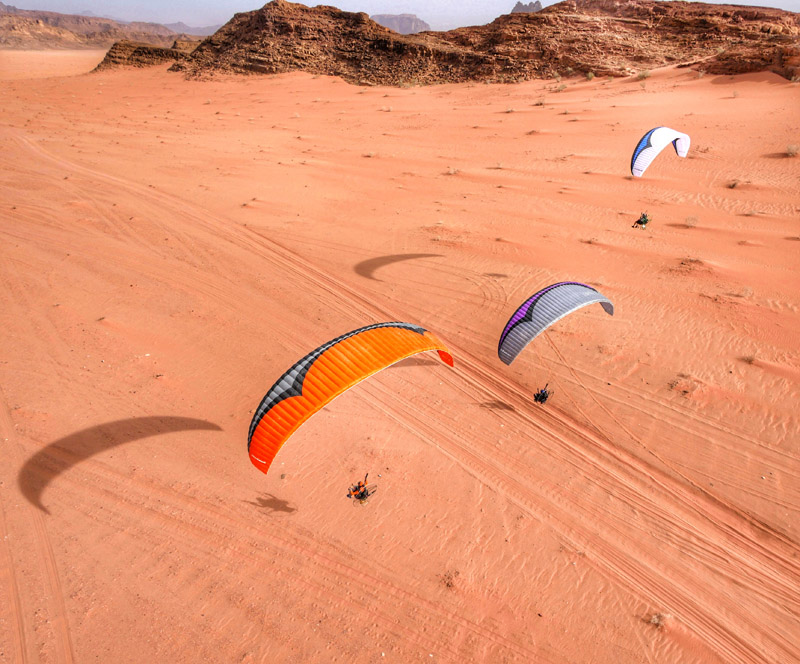
On returning to the UK I started the ball rolling and requested the permission to fly a paramotor in Jordan. After numerous email and phone calls, I was finally granted special permission to visit some of the protected sites.
I decided to bring a team of experienced Gin pilots to accompany me. With more permissions and paperwork, we finally got the all clear.

Our first port of call was Aqaba, to dive the amazing Red Sea. Some of the pilots had never dived, so I organised instructors to guide them giving everyone the chance to explore the recently sunken C-130 Hercules. The following day we dived the Cedar Pride wreck, a large cage ship sitting in 6-24m. The newbies had the chance to explore the uppers part of the superstructure, whilst watching the rest of the dive team explore the lower hull down in the depths.
After a great few days off the coast, we headed inland into the desert where we spent 2 nights sleeping under the stars in a Bedouin tent. The locals cooked up a banquet of traditional food with their specialty of sheep’s testicles. Not something I was expecting, but all the lads tucked into it as we were all very hungry!
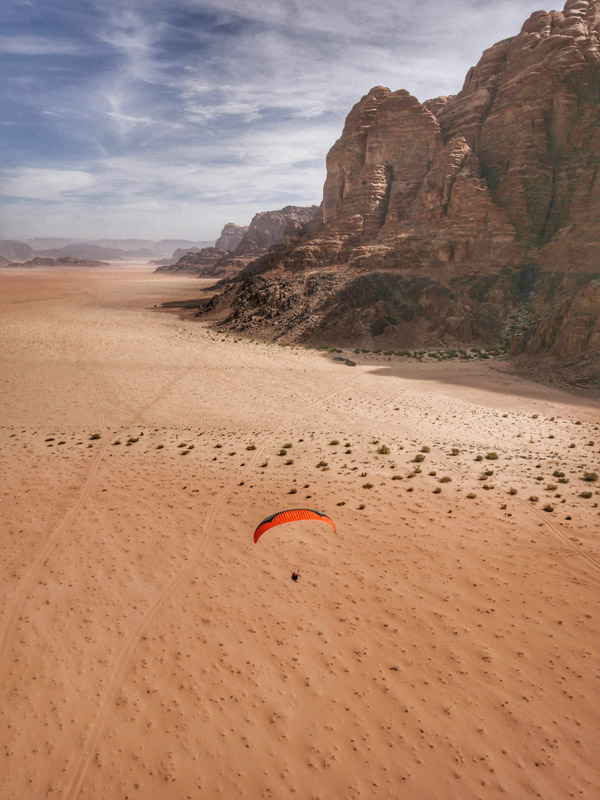
To get the best flying conditions we were woken by the smell of dark black Bedouin coffee bellowing through the tent at 4 am.
As The flying sites were at 5000ft ASL, we all had had to tinker with our carbs and richen them up, otherwise non of us would have got off the ground and probably blown a few pistons!
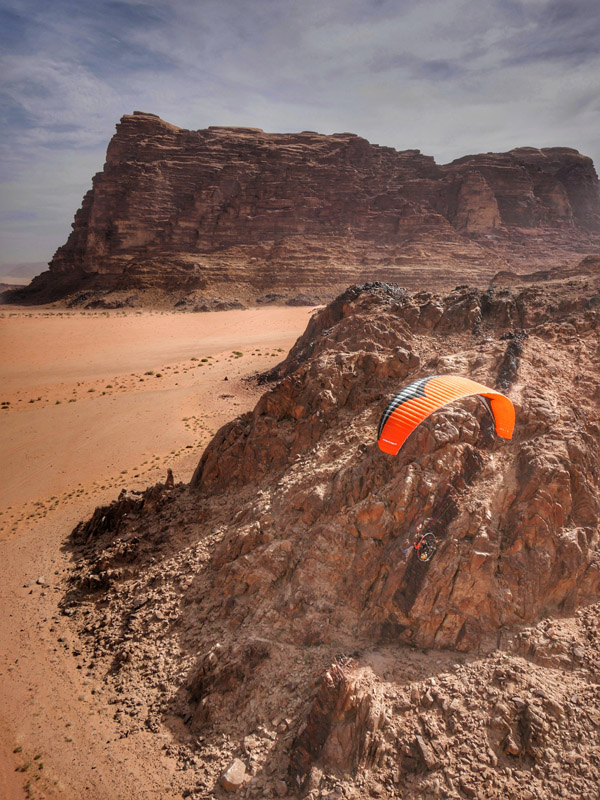
As the sun rose the wind started to pick up so Bjorn & Stefan, Franck took off first followed by Bobby & Myself.
Bobby led the way through the rocky gorges and around towering rocky pillars. The sun slowly appeared and the mountains changed colour from a dark red to orange. We snaked through the rock formations going from warm to cold as the desert started to slowly warm up.
The whole experience was breathing, as the team flew in formation amongst the amazing rocky scenery. Some of the team landed, as the wind picked up, and the thermals started to kick it making it quite unpleasant at times.
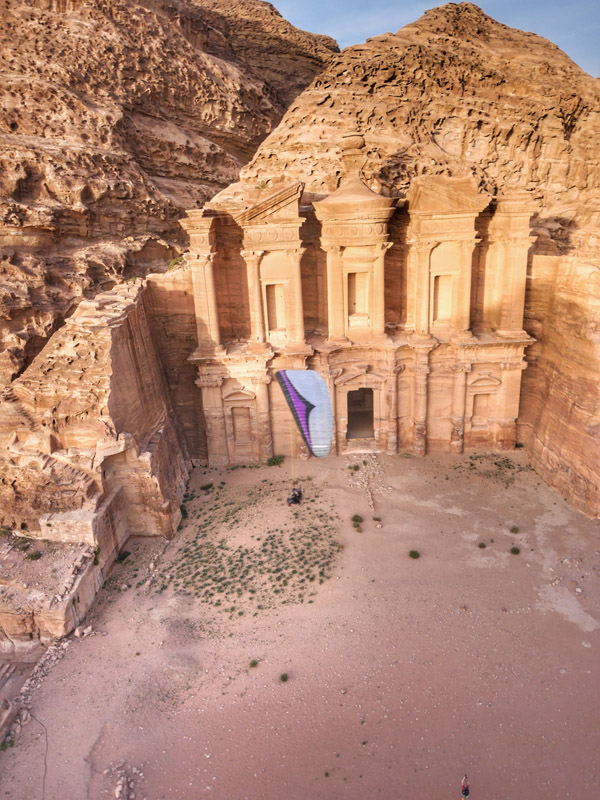
I stayed airborne with Stefan and headed up a huge valley and hid in the lee of a mountain where there was no wind at all and ventured to a local Bedouin township in the distance where kids ran out to greet us as we flew over them.
We spent the next 2 days exploring different sites in the desert where we were finally taken to Laurence of Arabia Canyon. There is no actual proof he visited this site, but it was well worth the flight. The team set up just before sunset just outside the canyon then spent the last hours footdragging the sand dunes and flying the canyon. To finish off the evening a number of us followed the local camel trains into the deserts as the sun went down.
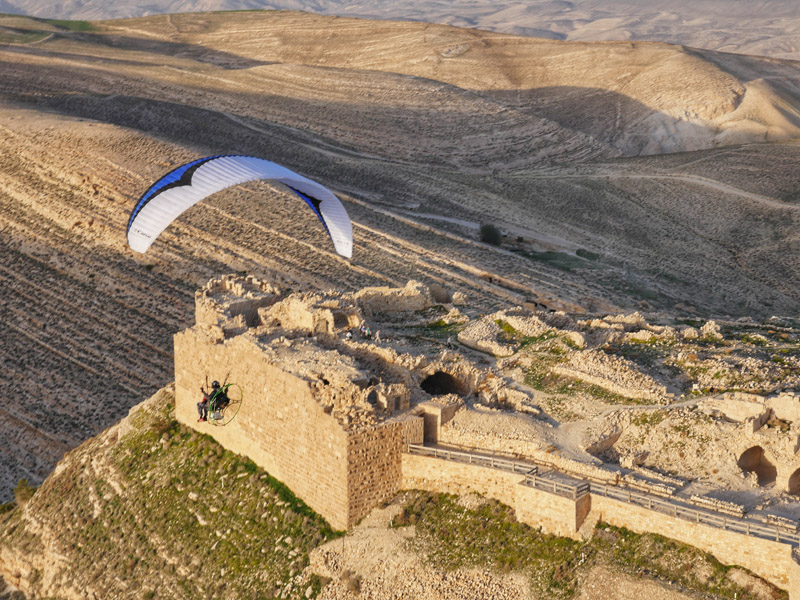
The most challenging part of the trip was Petra. The ancient city is set amongst a huge range of rugged mountains. We were told it was almost impossible to fly there due to the challenging winds. After a 4 hrs drive from Wadi Rum, we were hit by strong winds on arrival. The weather outlook wasn’t very promising but Our schedule planned 3 days of flying with one-day spare for bad weather, so we had some leeway.
That night we went out looking for suitable take-off sites. Most of the area is in rugged mountains. After an hour of scouting about, we finally found a clear and suitable access road to the ancient city, which seemed ideal for a runway. We headed back to the hotel for a final flight briefing, then back to our rooms for an another early night.
The team crawled out of bed at 4 am then drove to the take-off site and set up.
There was absolutely no wind, so my take off was a long and never-ending marathon to get off the ground. Once airborne, I followed the ancient road into the city where I paired up with Stefan. There was no tourist about at 5.30 am, so we were able to fly close to the Great Temple & the iconic Royal tomb. It was quite a strange feeling being able to fly through such a famous city. I could imagine flying this city back in 5 Century BC and just wondered what the locals would have thought!

I could see Bjorn flying the Gin Carve 22m well below me, so I put in a few tight spirals, dropped down and followed him as he swooped down the ancient road. As we passed the Urn Tomb, the canyon narrowed down to a small crack in the rock leading to the world famous Treasury where Indiana Jones visited. We made a sharp right turn then flew over the ancient anti theatre that used to accommodate up to 4000 spectators.
There was one other place I wanted to visit which was not in the main city. The Monastery is well worth checking out but involves a long and arduous climb up 900 steps or 2 hrs hike through a hot rock canyon. This time I could fly and the journey took just 15 mins. The journey does involve flying up a nerve-racking rocky gorge, Not a place you would want an engine out as there is nowhere to land! It it well worth a visit, especially at sunset, as the whole of the rock face and the Monastery glows in the evening sunlight.
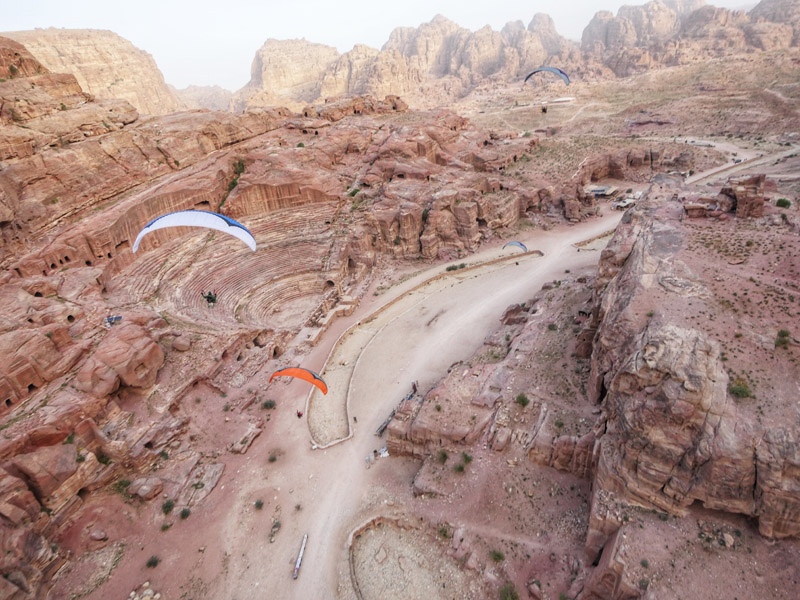
Our final leg of the journey was to head north to the Dead Sea. On route, we flew a few sites including the Crusader Shobak Castle and the sand dunes just 1 hrs from the Dead Sea. Both well worth visiting and worth asking for if you intend to fly Jordan in the Future.
The finale of the adventure was the Dead Sea, the lowest place on earth. Our take off-site was at -1000ft ASL at a local airfield run by the Royal Jordanian Aero Club.
We have travel 6000ft in vertical height, so again we had to make opposite adjustment to our carbs, as our engines were all running roughly. The wind conditions were strong, so with a quick wing inflation and a reverse launch we all made vertical take off.
We left the airfield and made a left turn as soon as we flew over the water. Our local guide made a point about only turning left, as if we turned right we would have going over the Israel border within a few hundred metres!
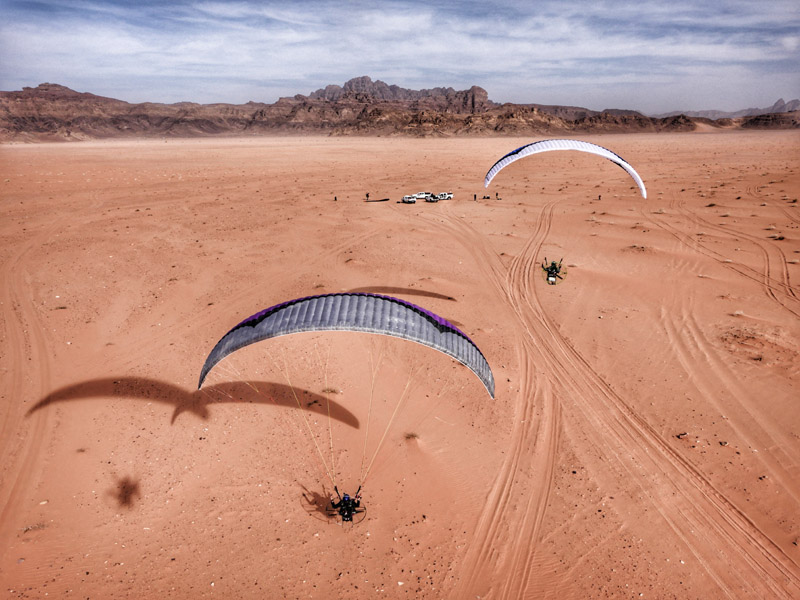
This was out last flight, so to make a show of it, we all flew in formation along the salt incrusted shoreline. We made a low pass along the beaches and waved at the floating visitors bathing in the salty sea. Our support by now were at the hotel waiting on the beach the cocktails.
After a few flybys for a photo call, the team swooped down and landed on the beach as the sun set. What an amazing way to end an epic lifetime adventure.”

Jordan as a flying destination is relatively unexplored site for paramotoring making it a hot new destination to visit. With its amazing culture, it is also a perfect place to bring your non-flying friends and family. For more information on tours visit https://www.paramotoradventures.co.uk